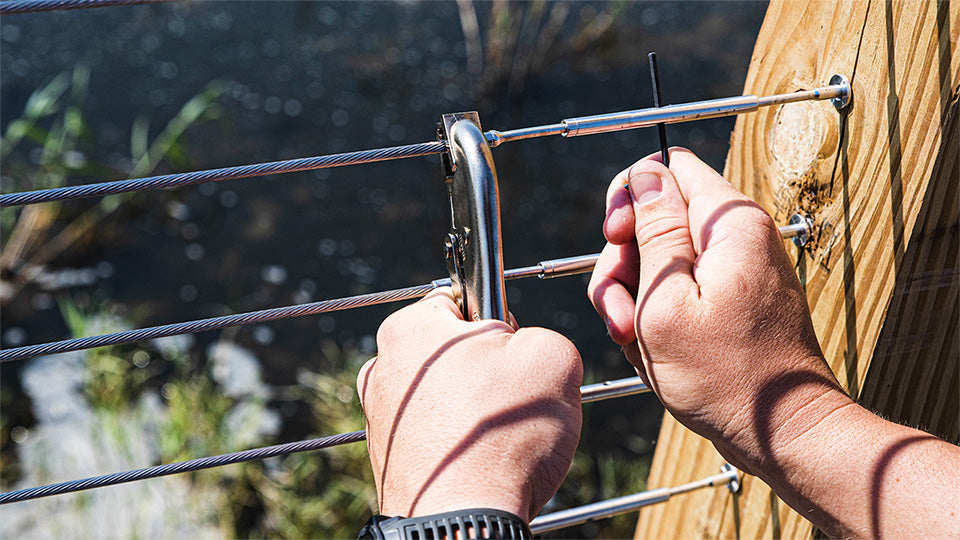Installing a cable railing system is straight forward (pun intended) for the most part. Yet there are a few things to consider before you begin installation. Thinking about these four things will give you the best chance at installing a cable railing system that may outlive the other elements of your construction.

- Inspect Your Remodel
If you're adding cable railing to existing construction, it's important to inspect all the posts and handrails for anything that could potentially jeopardize the integrity of your cable railing system. Look for things like rot, warping, and checks or cracks. You need to make sure that your post can support the tensioned cable. So, if you do find anything concerning, go ahead and replace those posts before installing your cable railing.

- New Intermediate Posts
If you're renovating your deck, you're probably replacing your old balustrade, and there's a good chance that you're going to need to add in some additional posts for your new cable railing system. Whether your deck is new or existing, National Building Code is going to require that your posts are spaced every 4 ft or less. This is important because the further that your posts are spaced from one another, the easier it is for the cables to be pulled apart.
Every deck is different, and the cable runs that you have may not perfectly divide into a 4 ft post spacing. So, for cable railing functionality, we recommend a maximum post spacing of every 6 ft. But it's always a good idea to check your local building codes and abide by the post spacing that they require.

- Paint or Stain Before Installation
There's a good chance that you're going to be either painting or staining the post and handrails on your deck. And it's a good idea to make sure that that is taken care of before installing your cable railing system. As you can imagine, painting/staining in and around cable railing fittings is tedious, so if you get it out of the way before those fittings are there, the only thing you'll have to do later is touch up any scratches or blemishes.

- Let Your Treated Lumber Cure
If you plan on using treated lumber for the posts and handrails on your deck, it's never a bad idea to let that lumber have a chance to dry before you install your cable railing system. Over time, freshly treated timber can shrink from drying, which can cause the cables to lose tension. If you don't have time to wait, then go ahead with the installation knowing that you may have to come back and re-tension the cables later. And if you're using any through post tensioning components, you'll want to stop short of cutting your stud off and wait till the lumber has dried and then complete final tensioning. If you have any other questions about planning your own HAAS Cable Railing System, head over to this blog to read all about The Basics of Cable Railing.
